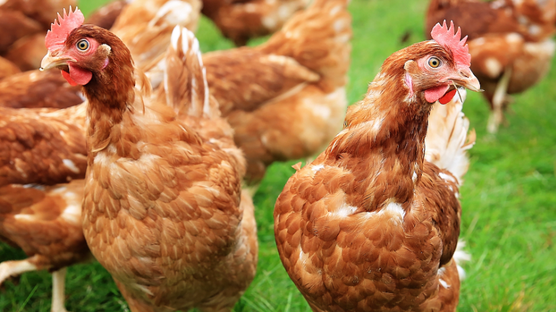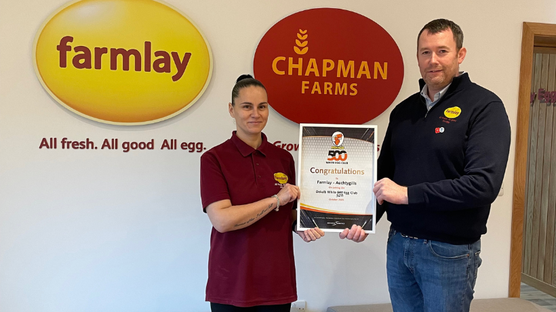
Published on Nov. 5, 2025
Traditional Farming Meets Innovative Diversification Strategies at Lower Mill of Tynet Farm
Nestled in the rolling Banffshire countryside, Lower Mill of Tynet Farm is an inspiring example of how traditional agriculture can thrive through innovation.
Run by Gordon and June Whiteford, the farm has grown from one small poultry unit into a dynamic, sustainable, and award-winning enterprise.
Gordon’s journey into farming began in childhood, growing up on a dairy farm in Ayrshire. “When I was 10 my father left farming to become a minister,” Gordon explains, “leaving the farm to go and live in a town was quite a shock, and I think that was the catalyst that made me determined to farm in my own right, if I got the chance.”
That ambition led him to study agriculture at SRUC Auchincruive and Craibstone, where he earned an HND in Agriculture and a Postgraduate Diploma in Farm Business Management.
From one field to 150 hectares
In 2005 Gordon rented a single field and set up an organic laying unit with 3,000 hens, and a contract with Glenrath Farms. By 2008, he had doubled that number to 6,000 birds. Then in 2012, Gordon and June took a major leap by securing a tenancy on the Crown Estate Scotland’s Fochabers estate, officially founding Lower Mill of Tynet Farm. In 2019, the acquisition of land from the neighbouring Upper Auchenreath Farm brought the total farm size to 150 hectares.
With the help of a 10-person team, the business now markets and distributes their own organic and free-range eggs, runs an innovative automated 24/7 farm shop and has developed its own dairy and ice cream range – using their own milk and eggs. In 2024, those efforts were recognised nationally when the farm was awarded Sustainable Farm of the Year, a testament to the Whiteford’s holistic approach to modern farming.
At present, egg production relies on 15,000 hens split across 2 x 3000 organic brown layer flocks and 2 x white free-range flocks, one of which is Dekalb White birds hatched by Joice and Hill.
Producing white eggs since 2017
Gordon became intrigued by the potential of white birds whilst completing a Nuffield Scholarship in 2015, where he explored poultry welfare practices in the Netherlands. Noting that white eggs were popular across Europe and North America, he spoke to Dutch farmers and learnt that they were farming non-beaked birds without problems.
As a result, Lower Mill of Tynet was one of the first UK farms to reintroduce white-shelled eggs to British consumers, at a time when the UK was very much a brown egg market “Because we were using our eggs in the bakery, shell colour was irrelevant and selling our own eggs from small flocks allowed us to trial beaked hens and make a welfare gain,” Gordon recalls. “People said the UK wouldn’t buy white egg. But we tried it—and not only did customers accept it, but some also now prefer white eggs. Several of our retail customers noted an increase in their egg sales when they switched from brown eggs to white.”
“The majority of our free-range output is sold to our own customers. We have customers asking for white if we put brown in the shop. We used to put half and half in, but we now stock the shop about 80% white and 20% brown to match demand. Our customers tell us white eggs last longer for poaching, the shells are stronger and can be shelled more easily for boiled eggs” June explains.
Joining the Dekalb White 500 Egg Club
Gordon and June were recently presented with a certificate recognising their membership of the Dekalb White 500 Egg Club, awarded to producers who have recorded over 500 eggs per hen housed, over one cycle.
“When we started, no one believed the production we were getting,” Gordon commented, “we kept the first birds to 80 weeks because no one told me they would go to 100 weeks. Our latest flock of 2,000 Dekalb Whites recorded 521 eggs per hen housed at 104 weeks, and the birds are free-range with full beaks.”
Gordon and his team maintain high welfare standards across both organic and free-range systems “Our free-range flocks are run to near-organic standards,” he says. “We use smaller flock sizes and lower stocking densities to ensure the health and comfort of our birds.
“The white birds are slightly smaller than typical brown breeds which means they require less feed, they also require less protein meaning that white eggs come with a lower carbon footprint. White breeds typically have an extra 6 months of commercial lifespan which is about 40% longer than typical brown breeds” Gordon says.
A Surprising Discovery Observation-led adaptation is a hallmark of the Whitefords’ farming style. Over the years, Gordon has experimented with flock dynamics to improve efficiency and bird welfare. One surprising discovery was how mixed flocks - white and brown hens - interact in unexpected ways.
“In one case, we had 2,500 white birds with 500 brown birds. The brown ones went to the corners of the shed while the white ones stayed in the middle. It was all about how they’d been reared,” Gordon explains, “but when we mixed them evenly and gave them the same management, the white birds actually trained the brown birds to use the nest boxes, which reduced floor eggs significantly.”
Pictured: Maurice Salmond (left), Gordon Whiteford (right)



